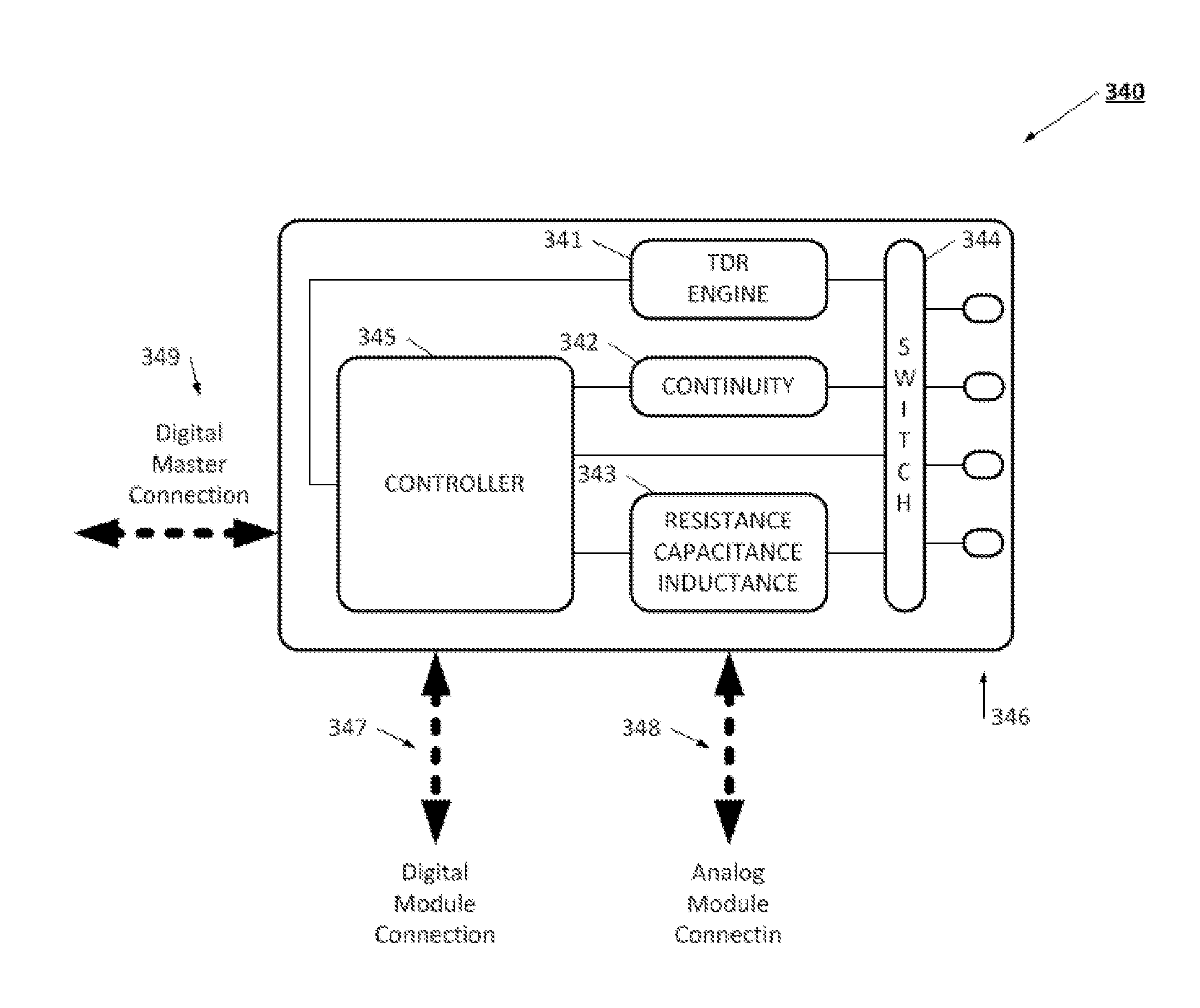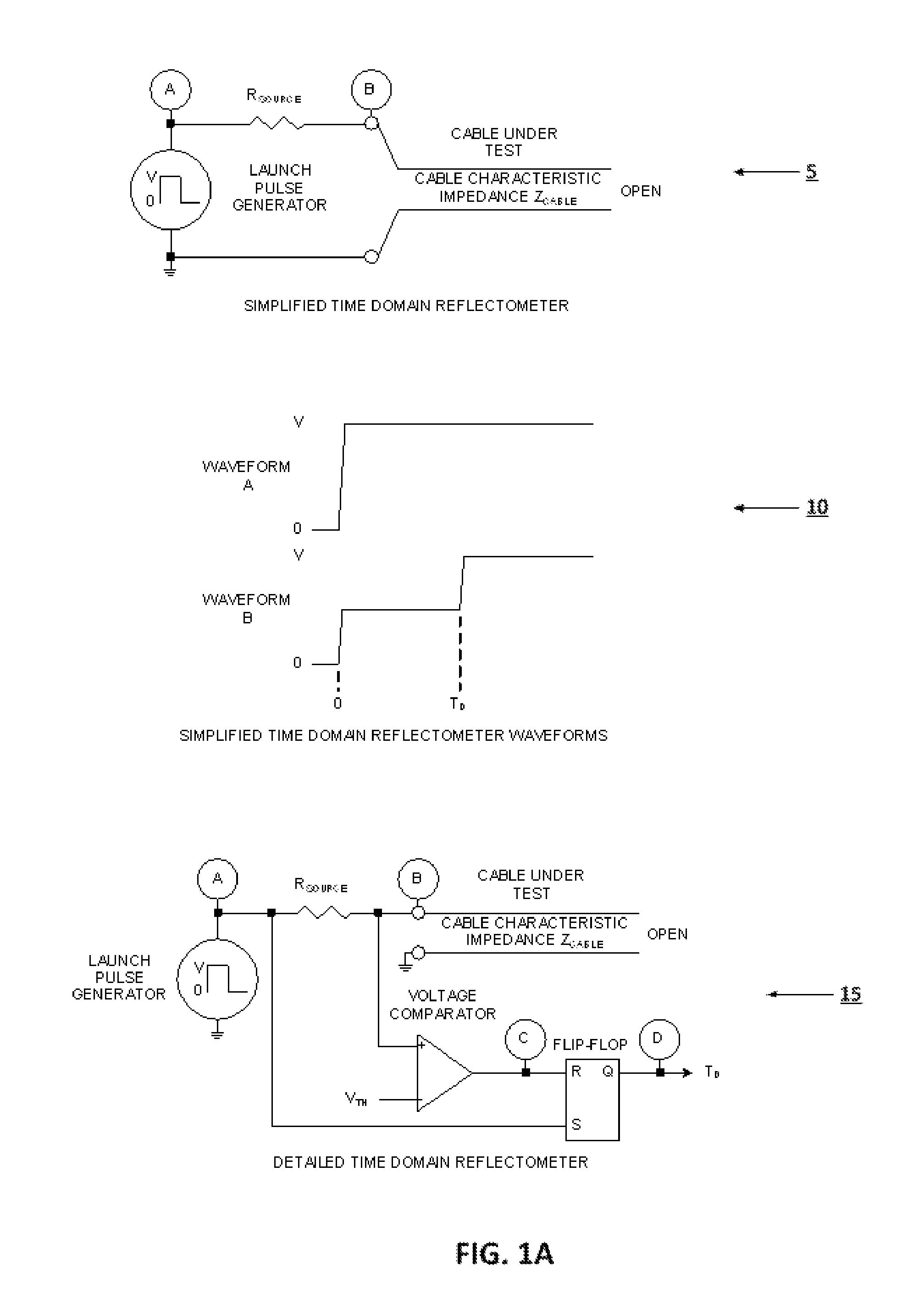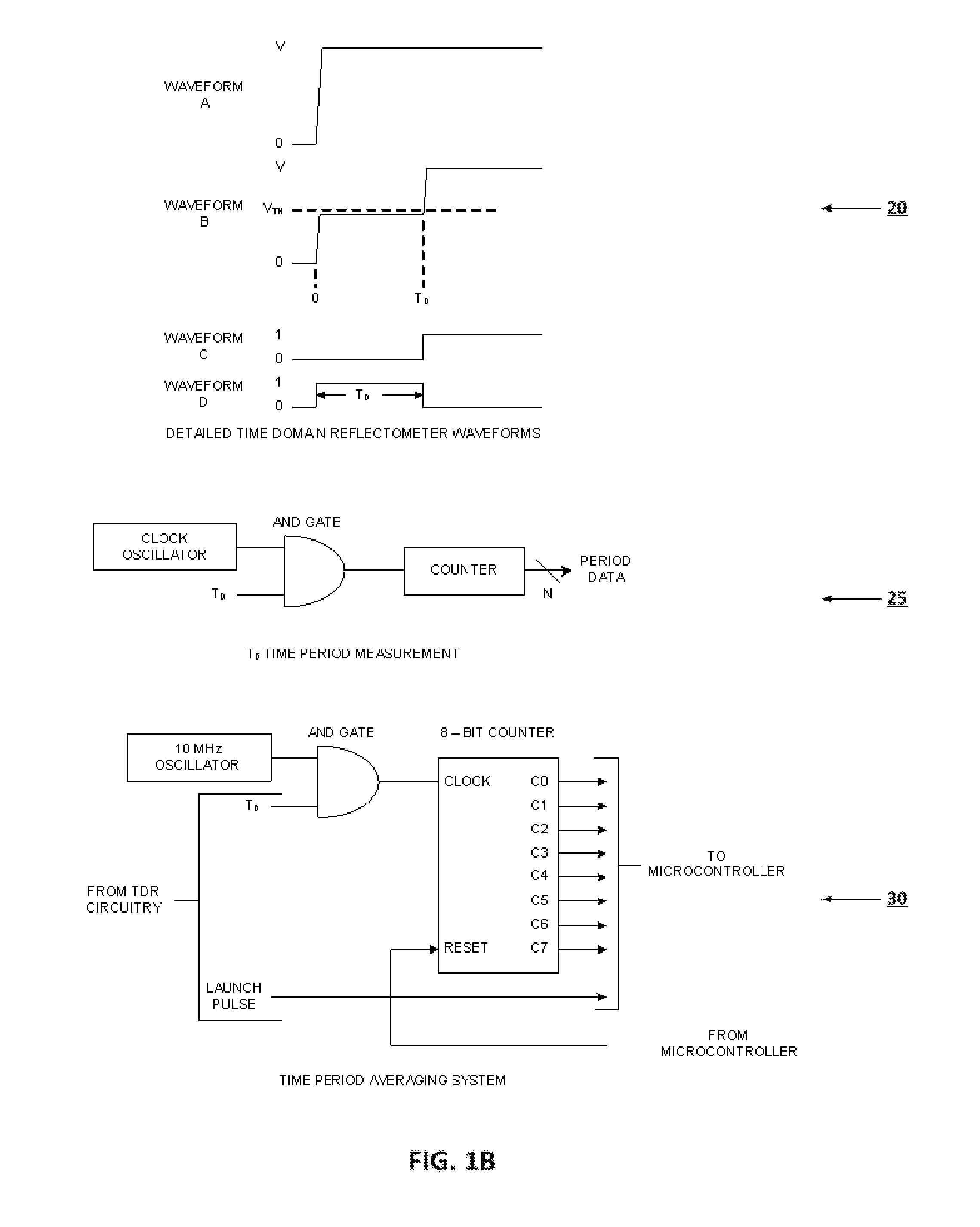System and Method for Automated Testing of an Electric Cable Harness
a technology of automatic testing and electric cables, applied in the direction of pulse reflection methods, line-transmission details, instruments, etc., can solve the problems of increased manufacturing costs, electrical failure, unnecessary delay, etc., and achieve the effect of efficient system
- Summary
- Abstract
- Description
- Claims
- Application Information
AI Technical Summary
Benefits of technology
Problems solved by technology
Method used
Image
Examples
Embodiment Construction
[0063]Referring now to FIG. 2, a typical cable harness is illustrated. In particular, harness 100 is a relatively simple harness for a passenger car, and may be particularly constructed for use in providing electrical and communication interconnection for a single passenger car door. It will be understood that the disclosure of the present invention can be used on many different types and complexities of electrical harnesses, and is applicable on products other than motor vehicles. For example, airplanes, spacecraft, ships and boats, heavy-duty equipment, machinery, appliances, instrumentation, consumer electronics, computers, displays and other electrically powered devices all use cable harnesses to efficiently route electrical, power, and communication lines. It will also be understood that the harness may comprise many different kinds of lines, such as power, digital, analog, and ground, and that these wires come in many sizes and materials, or may be formed as individual wires, ...
PUM
 Login to View More
Login to View More Abstract
Description
Claims
Application Information
 Login to View More
Login to View More - R&D
- Intellectual Property
- Life Sciences
- Materials
- Tech Scout
- Unparalleled Data Quality
- Higher Quality Content
- 60% Fewer Hallucinations
Browse by: Latest US Patents, China's latest patents, Technical Efficacy Thesaurus, Application Domain, Technology Topic, Popular Technical Reports.
© 2025 PatSnap. All rights reserved.Legal|Privacy policy|Modern Slavery Act Transparency Statement|Sitemap|About US| Contact US: help@patsnap.com



